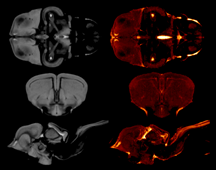Nanoscale Organisation & Dynamics Group Projects
The research projects listed below are representative of current or completed projects within the Nanoscale Organisation and Dynamics Group.
NanoRatchet
University of Western Sydney inventors Dr Scott A. Willis, Prof William S. Price, A/Prof Gary R. Dennis and Dr Gang Zheng have developed an original design for a new separation technology called the NanoRatchet. The NanoRatchet can be constructed from nano-materials and upwards to achieve continuous flow separations at the molecular level through to (macroscopic) particle separations. (NanoRatchet information brief) (PDF, 187.49 KB) (opens in a new window)
Water Control Technique
Researchers at the University of Western Sydney (Dr Gang Zheng, Prof William S. Price and Dr Allan M. Torres) have developed a new method of water signal control/ suppression to prevent the problematically strong water signal in solution-state NMR, with no or minimal loss of features of interest.
The newly developed WaterControl technique provides highly selective and quantifiable water signal control/suppression suitable for protein/DNA/RNA structure determination, metabolomics, magnetic resonance spectroscopy (MRS) and chemical shift imaging (CSI). (Water Control information brief) (PDF, 336.26 KB) (opens in a new window)
Force in NMR
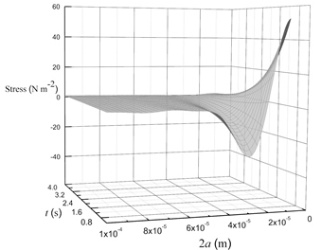 | Predicting a small force over typically micrometre length scales by diffusing species in a bounded geometry under certain nuclear magnetic resonance pulsed magnetic field gradient sequences. My calculations reveal that the total magnetisation energy in a pore under the influence of a pulsed gradient will be distance-dependent thus resulting in a force acting on the boundary. It is shown that this effect of the magnetisation of diffusing particles will appear as either an attractive or repulsive force depending on the geometry of the pore and magnetic properties of the material. It is shown that the force decays exponentially in terms of the spin-spin relaxation. |
Brain Structure and Volume Variation of Agamid Lizards under Contrasting Natural and Sexual Selection.
Three orthogonal slices from the three dimensional atlas dataset | This project investigated how sociality, sexual selection and natural selection act on brain structure in Australian agamid lizards. Using the 500 MHz MRI, over 280 lizard brains were imaged with 100 µm isotropic voxel resolution. A further 10 brains were scanned at 50 µm isotropic voxel resolution to create the first ever 3D lizard brain atlas. |
Investigating More Realistic Pores in Diffusion NMR.
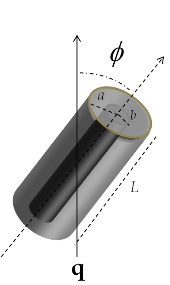 | Simulated spin-echo attenuation data for diffusion in a reflecting concentric cylindrical pore, whose symmetrical axis is oriented at f = 45° with respect to the magnetic gradient (q). | 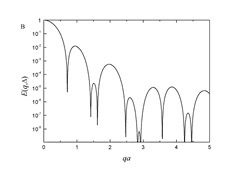 |
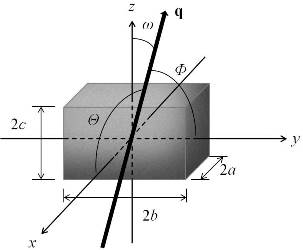 | Simulated spin-echo attenuations in a reflecting (solid line) and relaxing (dotted line) cuboid with dimensions a = 150, b = 100 and c = 130 μm , oriented in an arbitrary direction of θ = 75°, ϕ = 39° and ω = 55° from the magnetic gradient | 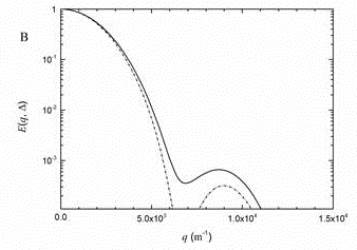 |
NMR (MRI) Signal Processing
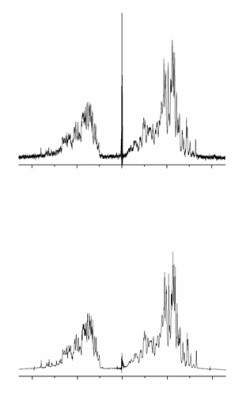 | We are currently working on an NMR signal enhancement project that can be also used for imaging (e.g. MRI). We were able to modify the powerful Singular Value Decomposition method algorithm in signal processing. Our algorithm has many advantages over the previous one, because it does not require much information about the pre-processed signal or image. More work is still needed to complete the algorithm. |
Imaging Placental Function
| Preeclampsia is a serious medical condition suffered by some pregnant women with abnormal placental development implicated in its aetiology. It is a leading cause of morbidity and mortality in both mothers and infants and is characterised by high blood pressure and protein in the urine. In this project, T2 mapping, which is sensitive to metabolic variables such as oxygenation and pH, was used to investigate placental changes in two well established models of preeclampsia: the Reduced Uterine Perfusion (RUPP) and the TNF-α infusion models. | |
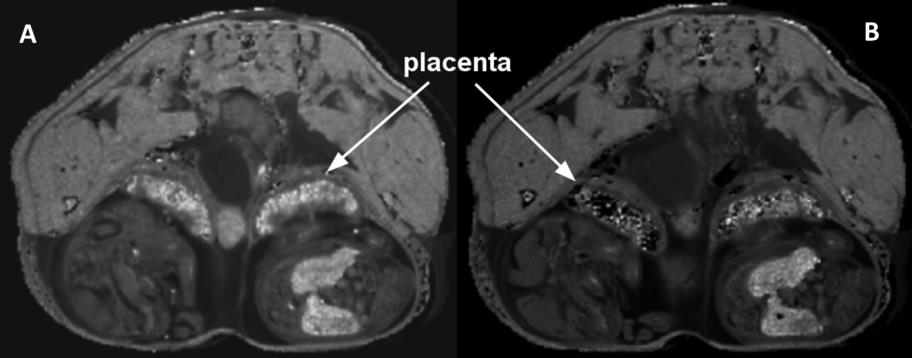 | R2 (1/T2) map of gestational day 17.5 normal pregnant C57BL/6JArc mouse showing T2 contrast in the placenta A) before and B) after cessation of blood flow. |
| Further research projects modifying and optimising sequence acquisitions and performing post-acquisition processing in order to obtain multi compartment information (vascular and extravascular) and information on dynamic responses to changes in oxygenation analysis are available. Definitive analysis of changes in tissue pH by MRI and spectroscopic identification of possible metabolic biomarkers of disease are studies that are also earmarked. | |
Mobile options:

